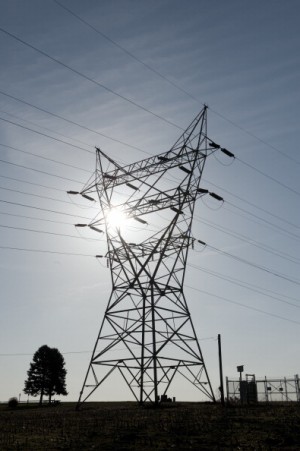National Park Service Opposes New Power Lines in the Delaware Water Gap

Stan Honda / AFP/Getty Images
Towers carry electricity from the Peach Bottom Nuclear Power Plant in Lancaster County, Pennsylvania.
Plans for new high-voltage power lines through the Delaware Water Gap National Recreation Area have hit a snag with this week’s release of the draft environmental impact statement by the National Park Service. The statement says canceling the project would be the best option to preserve “the biological and physical environment,” and protect “…the historic, cultural, and natural resources,” of the Water Gap Recreation Area.
The proposed 145-mile line would run from Berwick, Pa., to Roseland, N.J. It would run through existing rights of way, but would replace the current 85-foot towers with 200 foot towers. The plan would also widen the existing rights-of-way, and construct new access roads in the Delaware Water Gap Recreation Area, the Middle Delaware National Scenic and Recreational River and National Recreation Water Trail, and the Appalachian National Scenic Trail.
Costing about $1.2 billion dollars, the proposed transmission line would carry electricity from the Susquehanna nuclear power plant in Berwick, Pa., running through Lackawanna, Luzerne, Monroe, Pike and Wayne counties before crossing the Delaware River into New Jersey. The line would be built by PPL Corporation and PSE&G and run by PJM Interconnection. Proponents say the new transmission line is needed to reduce congestion, preventing electricity disruptions in heavily populated areas.
Environmentalists say New Jersey should rely more on alternative energy sources like wind and solar. The Obama Administration decided to fast-track the project last month, saying it would create 2,000 jobs. The National Park Service’s draft environmental impact statement includes a 60-day public comment period. Their final statement should be completed by the fall of 2012.
















